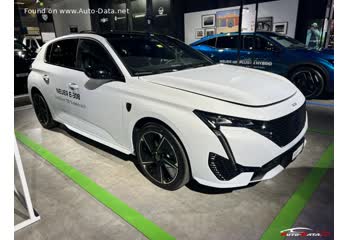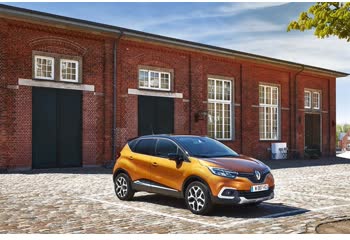Everything you need to know about specifications and performance - Peugeot 308 2017 - 1.2 PureTech (130 Hp)

Overview:
What is the engine capacity of a Peugeot 308 2017?
The engine capacity of the Peugeot 308 2017 is 1199.
Peugeot 308 2017 How many horsepower?
The engine power of the Peugeot 308 2017 is 130 Hp @ 5500 rpm..
What is the Peugeot 308 2017 engine?
Peugeot 308 2017 engine is HNW EB2DTS. (Click to see other cars using the same engine)
How much gasoline does a Peugeot 308 2017 consume?
The Peugeot 308 2017 consumes 4.5-4.6 liters of gasoline per 100 km
General:
Brand: Peugeot
Model: 308
Generation: II (Phase II, 2017)
Modification (Engine): 1.2 PureTech (130 Hp)
Start of production: 2017
End of production: 2018
Powertrain Architecture: Internal Combustion Engine
Body type:Hatchback
Seats: 5
Doors: 5
Engine:
Power: 130 hp @ 5500 rpm.
Power per litre: 108.4 hp/l
Torque: 230 nm @ 1750 rpm.
Engine Model/Code:HNW EB2DTS
Engine displacement: 1199
Number of cylinders: 3
Engine configuration: Inline
Number of valves per cylinder: 4
Fuel injection system: Direct injection
Engine aspiration: Turbocharger, Intercooler
Engine oil capacity: 3.5 l
Engine layout: Front, Transverse
Performance:
Fuel Type: Petrol (Gasoline)
Fuel consumption (economy) - urban: 5.7-5.8 l/100 km
Fuel consumption (economy) - extra urban: 3.8-4.0 l/100 km
Fuel consumption (economy) - combined: 4.5-4.6 l/100 km
Emission standard: Euro 6
Acceleration 0 - 100 km/h: 9.6-10.3 sec
Acceleration 0 - 62 mph: 9.6-10.3 sec
Maximum speed: 201-207 km/h
Weight-to-power ratio: 8.4 kg/Hp, 119.3 Hp/tonne
Weight-to-torque ratio: 4.7 kg/Nm, 211 Nm/tonne
Acceleration 0 - 60 mph: 9.1 sec
Space:
Kerb Weight (kg): 1090-1323
Max. weight (kg): 1750
Max. roof load: 80 kg
Max load (kg): 427-660
Trunk (boot) space - maximum: 1228 l
Trunk (boot) space - minimum: 420 l
Permitted trailer load with brakes (12%): 1300 kg
Fuel tank capacity: 52.5 l
Permitted trailer load without brakes: 580 kg
Permitted towbar download: 75 kg
dimensions:
Length: 4253 mm
Width: 1804 mm
Height: 1457 mm
wheelbase: 2620 mm
Width including mirrors: 2043 mm
Front track: 1559 mm
Rear (Back) track: 1553 mm
Front overhang: 863 mm
Rear overhang: 770 mm
Minimum turning circle (turning diameter): 10.4 m
Powertrain, Suspension and Brakes:
Drivetrain Architecture: The Internal combustion Engine (ICE) drives the front wheels of the vehicle.
Drive wheel: Front wheel drive
Number of gears and type of gearbox: 6 gears, manual transmission
Front brakes: Ventilated discs
Rear brakes: Disc
Assisting systems: ABS (Anti-lock braking system)
Steering type: Steering rack and pinion
Power steering: Electric Steering
Tires size: 205/55 R16 88H; 225/45 R17 88H; 225/40 R18 88H
Wheel rims size: 16; 17; 18
Front suspension: Independent type McPherson
Rear suspension: Semi-independent, coil spring, Elastic beam
See also

Last generation.
Its production began in 2023 until 2025

Other generation.
Its production began in 2010 until 2011

Same production year and almost the same engine capacity.
Its production began in 2017 until 2018

Same production year and almost the same engine capacity.
Its production began in 2017 until 2018

Write a comment